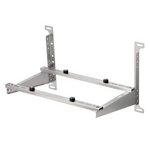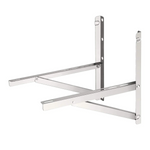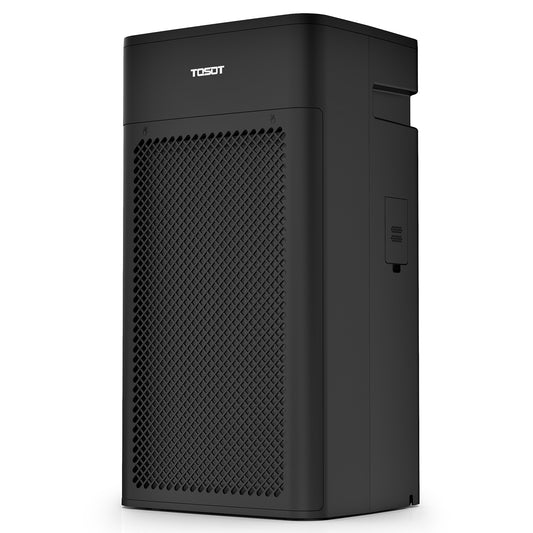What are allergies?
Have you ever felt like you overreacted to something someone said, or do you know someone who overreacts often? Humans sometimes get emotional and tend to overreact when exposed to certain situations.
Our bodies can overreact sometimes too. They get confused and identify certain stimuli in the environment as being threatening (allergens), although they don’t represent any real danger. They overreact to protect us. What they don't know is that this overreaction can really affect us.
Like people, some bodies overreact more than others. While some people may begin sneezing or get watery eyes when exposed to certain substances, others may have no reaction at all. If you suffer from allergies, you may understand what I’m talking about.
There are many allergens and you may be aware of the existence of common ones like pollen, bee stings, or certain kinds of food. However, you or someone you know may be reacting to other allergens inside your home without even being aware. You may be confusing the symptoms with a cold.
Indoor Allergens
We tend to believe outdoor air is dangerous to our health, however, indoor conditions can affect our health greatly. Indoor air can be more harmful to our health than outside air. Since we spend 90% of our time indoors, today we’re going to talk about 3 very common allergens that can be inside your home and may be causing you some trouble.
1. Cockroaches:

- They survive better in temperatures from 77°F to 86°F. Below 77°F, they may seek a warmer home.
- They love moisture (humid weather or rainy season). The dampest places in your home are kitchens and bathrooms, so that’s where they love to settle. They enjoy humidity levels from 60% to 70%:
- According to Sciencing, they can survive 1 month without food and 2 weeks without water.
- They feel comfy in dark places.
- Lower the temperature: Keep it lower than 60°F - 70°F.
- Keep your house dry. A dehumidifier is a great help to keep humidity below 60%.
- Keep your house super clean and make food inaccessible to them (wash your dishes immediately after eating as they can survive with food left on your dirty plate). Scrub any areas with food, including floors!
2. Mold:

- High humidity. Although many affirm that it begins showing up at indoor relative humidity levels above 55%, recent studies show mold can even begin growing when humidity is above 45%.
- Darkness makes it easier for their growth.
- Certain materials like paper, adhesive, or some kinds of paint.
- It loves bathrooms, kitchens, basements, and garages. Although sometimes it likes to settle around your whole house.
- You may clean mold, but to prevent it from showing up again, reducing humidity levels is essential if they’re too high. Dehumidifiers are great and you’ll notice musty smells going away.
- Find ways to get some natural light inside.
- Read about the 6 Steps to Winning the Battle Against Mold
- Trap mold in the air with an air purifier.
3. Dust Mites:

- According to the American Asthma Association, they love high temperatures (68°F to 77°F) and high humidity levels (70% to 80%).
- They love feeding on human skin flakes.
- They love carpets, curtains, bed sheets, mattresses, and pillows.
- Keep your house clean.
- Avoid using wall to wall carpets.
- Wash your sheets regularly with hot water. Preferably weekly.
- Protect your mattress and pillows with dust mite proof covers.
- Reduce humidity levels with a dehumidifier.
- Trap dust and other particles with an air purifier.
To summarize
If you want to lower down your chances of respiratory allergies and asthma, watch out for these 3 indoor allergens: dust mites, mold, and cockroaches. There are more indoor allergens, but these have something in common: although they feed on different kinds of food, they love humidity.

Each has a different way to be eradicated and treated, but if you want to prevent them from hanging out in your space these 3 things are basic:
1. If you live under moist conditions, you can regulate humidity levels with a dehumidifier.
2. Keep your space super clean. If you’re allergic, the simple act of cleaning may be a great challenge for you. Actions like dusting can throw lots of particles into the air, so you may need help from someone else with the cleaning or will need to protect and cover yourself really well (for example with a dust mask and some gloves).
3. Use an air purifier! It will help you trap allergens and keep your air nice, clean, and will help you breathe easier!
We’ll share some dust cleaning tips with you very soon! For now, you can take a look at these:
DIY Tips
How to Clean Mold with Vinegar and Baking Soda
9 Quick Tips to Get Mildew Smell out of Clothes
To get more tips like these, sign up for our newsletter here:
TOSOT Dehumidifier Review
“We are newly arrived in Virginia from lovely Oregon (where one does not need a dehumidifier). After two months of smelly basement that I wouldn't spend time in, someone told us to get a dehumidifier. I had no idea what I was looking for, but after some research and feedback, I purchased a TOSOT 50 Pint Dehumidifier. I cannot believe the difference this machine is making. A GREAT find A GREAT product. Thank you!!!” Amazon Customer
Use information at your own risk: The information presented is intended for educational purposes only and is not intended to be a substitute for professional advice, diagnosis or treatment. Never disregard professional medical or home improvement advice. The information and suggestions should be discussed with a professional. You are responsible for independently verifying the information if you intend to rely upon or use it in any way. You use all information at your own risk







